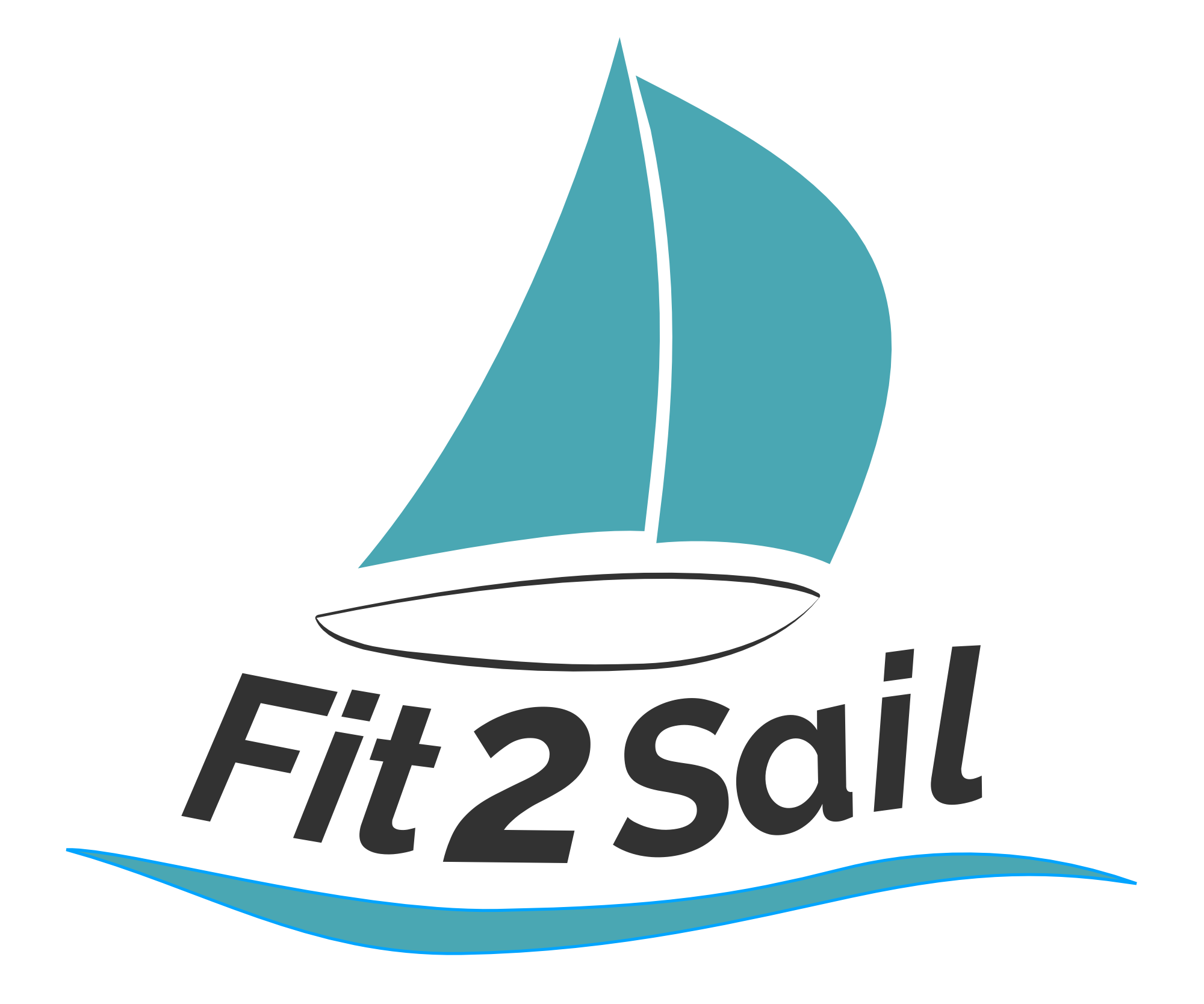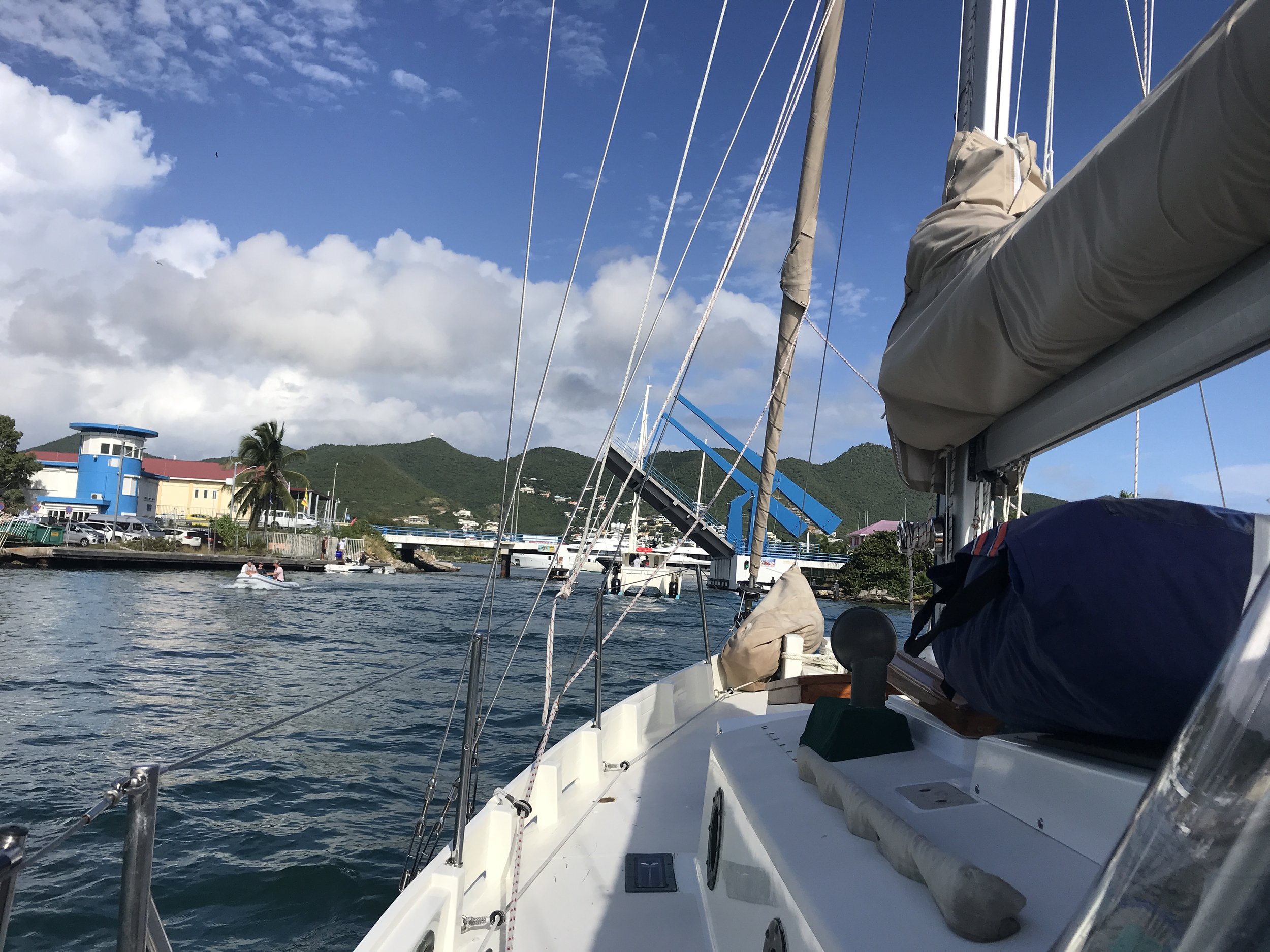St Martin to St Barths
Our passage to St Martin wasn’t as smooth as we’d hoped, with more motoring and confused seas than we’d wanted, but with the alternative being bashing directly into strong trades and accompanying large seas, we feel like we made out okay. The reason we’d initially headed for St Martin, way back in November when we left from North Carolina, was to avoid this battle to the east. We don’t regret our time in the BVI for one second and have in fact mentioned many times how glad we are that we made that choice as the place to welcome the kids for Christmas - that said, we’re pretty relieved to have this next bit of easting behind us. The next big hurdle is getting to Antigua, after which we should have “turned the corner” to sail south along the island chain.
First though? Locker restock in St. Martin and ogling mega yachts in St Barths.
Approaching Simpson Bay Bridge
St Martin/Sint Maarten is an island with a split personality. Two countries share the 37 square miles, and the first decision you need to make is where you’ll drop the anchor. You can anchor inside the more protected Simpson Bay lagoon (on either the French or the Dutch side) or you can anchor outside, with cleaner water for swimming and running the water maker. The drawback is that you’re far more susceptible to any swell that’s running. We opted to base ourselves inside, on the French side, looking for flat water and easy sleeping weather. That we have good friends anchored right off our beam is a plus for sure!
Welcome to St Martin!
Entering the Simpson Bay lagoon involves negotiating at least one bridge. The Sandy Ground bridge, on the north side coming in from Marigot Bay, has a reputation for being a bit less reliable, with some tricky navigating needed around shallow spots. It also has only 2 openings a day. The Simpson Bay bridge, on the Dutch side, is a bit more straightforward for navigation, and with 4 openings a day for inbound traffic, a bit easier to time. There’s no need to clear customs and immigration until you’re anchored, even if you’re transiting through the Dutch side to reach the French. We arrived within VHF range of the island about 10 in the morning, with a couple of hours travel time to go around to get to the Simpson Bay Bridge. Though we were heading for the French side after getting into the lagoon, the forecast northerlies made sitting in Marigot Bay waiting for a 5 pm entrance not enticing at all. Around the island towards Simpson Bay we went. No way to make the 11:30 opening; the next one would be at 3. So we set the sails, turned off the motor, and enjoyed some smooth tacking along the coast.
Once through the main bridge, we headed for the causeway bridge which is supposed to open 30 minutes after the main bridge; the last opening is at 3:30. Calling the bridge tender to alert him that we were hoping to go through, we were informed that we needed to pay the bridge fee before he’d open. This needed to be done at the police station right before going through the main bridge, and really should have been done before we went through the main bridge itself. News to us - everything we’d read and heard up to now indicated we’d have to pay before going back OUT. Roti, the dinghy, was deflated and rolled up tight on the cabin top. Ugh.
Good friends who were anchored already had listened in on the conversation with the bridge tender, and they were at the boat almost before we’d put down the microphone. “Grab your boat papers,” said Lee. “I’ll take you to the police station. Let’s go!” Away we zoomed. Clearly the posted 5 mph speed sign is not enforced at all.
There were 2 people ahead of me in line, all of us in the same predicament. The woman behind the counter was taking her time, reading through papers, entering information in the computer. One person slid in her credit card to the machine, paying for their boat. The second person did the same. My turn at the window!
An agonizingly long 5 minutes went by while she looked over Calypso’s documentation. “Have you been here before?” she asked. “Not in 30 years.” “Has your number changed?” “No.” “Hmm.”
I interrupted what seemed to be a very casual, methodical perusal that was taking FOREVER. “Is there any way you might please call the bridge tender and let him know we’re paid up? We’re trying to make the 3:30 bridge.”
“Oh, you won’t make it. You have to be at the bridge for him to open. You can go through at 8 in the morning.”
“My husband is at the bridge with the boat. He’s waiting there!”
She glared at me. “I’m supposed to be gone already.” It was Sunday; clearly she was not happy about working in the first place, let alone working past the time she was supposed to be off. And there were 2 more people in line behind me. I smiled apologetically and muttered something about how frustrating that must be and how much I appreciated her help.
“Is your boat more than 8 meters?”
I hesitated, trying to do some really fast mental math. “Maybe 8.5?” I guessed.
She shoved papers at me. “No fee. Your boat is under the limit. You’re free to go.”
We made the bridge.
Suggestion 1: if you’re going through the Simpson Bay bridge to go through the causeway bridge, pause at the police station (it’s on the left side of the canal right before the bridge, inbound) to get your paperwork in order. There’s no need to clear into the Dutch side, but they do want their bridge transit $7.50 or $20 (or nothing, in our case). Whether you need to pay before going through seems to be a matter of which bridge tender is on duty (same bridge tender goes from one to the other) but it’s probably worth the peace of mind just doing it ahead of time. Then, when the bridge tender asks you if you’ve checked in at SLAC, you can answer “yes” with no hassle. The fee is actually for transiting the main bridge, not the causeway bridge, and it’s for both directions.
Clearing in at the French side is simple. Go to Ile Marine, a chandlery that’s in the canal of the Sandy Ground bridge, and fill out the form on the computer there. They check your boat paper and your passports, to make sure the numbers you entered are the same ones on the official papers. No fee unless you screwed up the typing, which apparently comes at the cost of 1 Euro. There’s no anchoring fee or cruising permit needed. Clearing out is similarly simple.
Street art, Marigot.
Clearing in at the Dutch side sounds a bit more complicated, and certainly more expensive; for one thing, there’s an anchoring fee assessed per week, though I’m not sure of the details. If you’d like to be in a marina on the Dutch side (most of the marinas in the lagoon are on the Dutch side), you’ll have to clear in there.
St Martin/Sint Maarten is a duty free island, with no import duties on either side. There’s a reason cruisers flock here, and it’s got a lot to do with the ease of getting in boat parts - if you can’t find them already here, that is. Add to that the fact that provisions are far less expensive than most other places in the eastern Caribbean . . .
There’s a cruisers net in the mornings (7:30 am, channel 10 VHF). Helpful local businesses that offer almost every kind of service you might need. A provisioning bus that runs on Friday mornings from one of the local chandleries ($6 round trip). A bar that serves $1 beer during happy hour. Countless restaurants that serve far less expensive food than we saw in the VI. I haven’t yet found the laundromat (though there are many places where you can drop off your laundry to be done for you) and the bigger grocery stores are a bit of a hike from the waterfront, but all in all life is pretty easy here. We’re already talking about coming back up from Trinidad in the fall to do a good reprovisioning before heading to Bonaire or Curacao.
All we did, really, in St Martin, was provision. Not even an island tour. Next time!
From St Martin we headed to St Barths, where the (deserved) reputation is of glitz and glamour. We’re still here as I write this. We pay our cruising fees on check out so don’t know exactly what this will cost; Jeremy thinks it’s 12 Euros a night to be near Gustavia harbor with a parks fee per person for nights spent in the marine park. Whether the parks fee is on top of the 12 Euros a night is a bit of a mystery. I’ll keep you posted.
Welcome to St Barths!
St Barths holds a special spot in our memories. Our good friends David and Alison lived here for a while after college and got engaged at the lighthouse overlooking the harbor; we spent spring break of our third year at UVA with them on the island. On our first cruise, in the 1990s, we spent a fun-filled few days exploring beaches and hiking all over with our best buddies on Mahalo. We didn’t want to miss out, super yacht insanity notwithstanding.
2 nights in Colombier, 2 nights in Ile Fourche, and 2 nights just outside of Gustavia harbor. Lots of walking and hiking and listening to the super yachts warn each other off of anchoring too close . . . (If anyone knows what, exactly, a “shackle” is in terms of amount of anchor chain, will you please chime in?)
Looking down into the anchorage at Ile Fourche. See Calypso?
Next up? Antigua!





